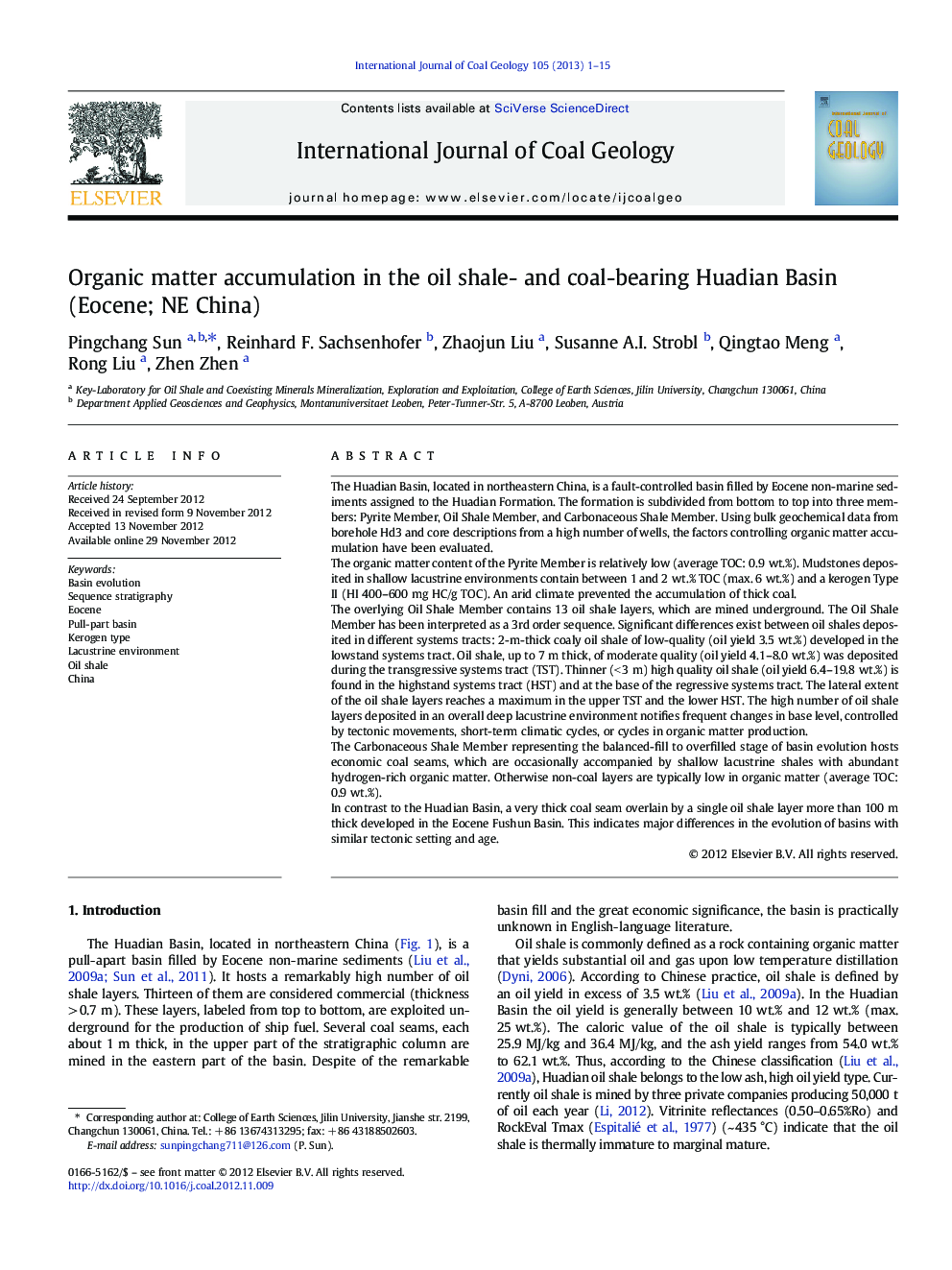| کد مقاله | کد نشریه | سال انتشار | مقاله انگلیسی | نسخه تمام متن |
|---|---|---|---|---|
| 1753451 | 1522589 | 2013 | 15 صفحه PDF | دانلود رایگان |

The Huadian Basin, located in northeastern China, is a fault-controlled basin filled by Eocene non-marine sediments assigned to the Huadian Formation. The formation is subdivided from bottom to top into three members: Pyrite Member, Oil Shale Member, and Carbonaceous Shale Member. Using bulk geochemical data from borehole Hd3 and core descriptions from a high number of wells, the factors controlling organic matter accumulation have been evaluated.The organic matter content of the Pyrite Member is relatively low (average TOC: 0.9 wt.%). Mudstones deposited in shallow lacustrine environments contain between 1 and 2 wt.% TOC (max. 6 wt.%) and a kerogen Type II (HI 400–600 mg HC/g TOC). An arid climate prevented the accumulation of thick coal.The overlying Oil Shale Member contains 13 oil shale layers, which are mined underground. The Oil Shale Member has been interpreted as a 3rd order sequence. Significant differences exist between oil shales deposited in different systems tracts: 2-m-thick coaly oil shale of low-quality (oil yield 3.5 wt.%) developed in the lowstand systems tract. Oil shale, up to 7 m thick, of moderate quality (oil yield 4.1–8.0 wt.%) was deposited during the transgressive systems tract (TST). Thinner (< 3 m) high quality oil shale (oil yield 6.4–19.8 wt.%) is found in the highstand systems tract (HST) and at the base of the regressive systems tract. The lateral extent of the oil shale layers reaches a maximum in the upper TST and the lower HST. The high number of oil shale layers deposited in an overall deep lacustrine environment notifies frequent changes in base level, controlled by tectonic movements, short-term climatic cycles, or cycles in organic matter production.The Carbonaceous Shale Member representing the balanced-fill to overfilled stage of basin evolution hosts economic coal seams, which are occasionally accompanied by shallow lacustrine shales with abundant hydrogen-rich organic matter. Otherwise non-coal layers are typically low in organic matter (average TOC: 0.9 wt.%).In contrast to the Huadian Basin, a very thick coal seam overlain by a single oil shale layer more than 100 m thick developed in the Eocene Fushun Basin. This indicates major differences in the evolution of basins with similar tectonic setting and age.
► The Huadian Basin hosts economic oil shale and coal layers.
► 13 oil shale layers, up to 7 m thick, accumulated in deep lacustrine environments.
► The number of oil shale layers indicates frequent changes of base level.
► Distribution and quality of oil shale layers vary in different systems tracts.
► Economic coal accumulated during the late stages of basin evolution.
Journal: International Journal of Coal Geology - Volume 105, January 2013, Pages 1–15